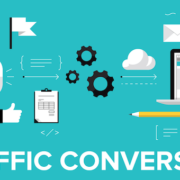How To Get More Senior Living Leads via Website Opt-Ins
Your senior living website serves several purposes. First, it should welcome site visitors and clearly direct them to the information they’re seeking. Second, it should provide a good user experience, thanks to easy navigation and a nice design. Finally, it should provide numerous ways to convert anonymous site visitors into senior living leads.
Today, we’re going to discuss the latter. Below are several strategies for getting more senior living leads via website opt-ins.
1. Use compelling calls-to-action (CTAs).
Your CTAs should entice people to take action. Consider the following examples:
- Book a tour now.
- Download our free guide.
- Request pricing.
Your CTAs should follow best practices, as well.
- Be specific, and be clear
- Design your CTAs for visual appeal.
- Don’t clutter them with too many words.
- Experiment with placement. For example, if you normally end blog posts with a visual CTA, try using a sliding CTA in the middle of the blog post.
- Always test your CTAs and monitor results.
Remember, A/B testing CTAs is an excellent way to determine which one drives more conversions. Follow the basic principle of A/B testing: test only one thing at a time.
For example, your first CTA might say, “Download our free guide.” The second CTA might say, “Get our free guide.” All the other elements in the CTA should remain the same. See which one results in more clicks. Good marketing automation software, like HubSpot, bakes CTA testing into its platform.
Another important point: CTAs don’t have to be visual, either. You can have text-based CTAs as well, such as “Schedule a tour now.” (This line would link to the tour landing page.) Your site should have a good mix of both visual CTAs and text-based CTAs.
2. Make sure your live chat captures email addresses.
Live chat is an easy way to get a person’s basic info. In fact, one of the first questions the live chat host should ask is this: “Can I get your email, just in case we get disconnected?”
Be thoughtful in how you use the emails you gather. In fact, you’ll want to carefully think through the lead nurturing workflow you enter these senior living leads into. Design a workflow specifically for people who come in via live chat.
3. Make it easy for people to subscribe to updates.
If you offer a blog subscription, make it super easy for people to subscribe. In addition to having a basic subscription box on the main blog page, consider adding lead-form “pop-ups” at the bottom of blog articles. It can say something like this: “Like what you just read? Get more articles like this. Just enter your email address.”
Do the same with monthly newsletters, podcasts, and any other type of content you regularly publish. Make it easy for people to sign up.
4. Provide different types of gated content.
People absorb information in different ways. Some folks want to sit and read a long-form piece of content, like a guide or e-book. Others prefer visuals, like an infographic. By offering multiples types of premium content, you will appeal to a wider audience.
When it comes to creating content, you don’t need to reinvent the wheel, either. Repurpose one piece of content and redistribute it via different media.
For example, turn the content from a longer blog post into…
- A nicely designed guide
- An infographic
- A registration-only webinar
5. Don’t skimp on your landing pages.
If you invest in awesome content and compelling CTAs, don’t let everything fizzle with a poor landing page experience. Your landing pages are the ultimate conversion point on your senior living website.
So, for example, if people are clicking on your CTA buttons, but they’re not filling out the form on the corresponding landing page, you know something isn’t working.
Like CTAs, good landing pages follow best practices. Make sure yours include:
- Compelling copy that explains what people get in exchange for providing their contact info
- Social “proof,” such as a testimonial or video (if applicable)*
- Short forms with clear form fields
- No navigation – this forces people to stay on the page
- Visually-pleasing design that responds to mobile devices
*Regarding “social proof,” here’s what we mean. Let’s say someone clicks on a CTA that brings them to a landing page where they can request a brochure about your senior living community. Or maybe they click on CTA about scheduling a tour. Either way, including a video on the landing page of a resident talking about her experience living in your community could make the difference between someone submitting the form and someone hitting the back button.
Note: You should A/B test landing pages, just like you do CTAs.
6. Make sure all of your website forms work.
Testing forms should be a no-brainer. Sadly, we’ve encountered many funky forms in our travels.
Test all of your forms, and make sure…
- The forms go through properly
- People’s names are being recorded in your contacts database (and scored appropriately)
- The person enters the correct lead nurturing workflow, if applicable
- Anyone who submits a form receives some sort of indication the form went through successfully
Not only should you make sure all your forms work, you should also make sure the work for your audience. As in, the information you’re asking people to provide should make sense to them.
BONUS: Don’t forget old-school methods.
When people come in for a tour or some other senior living marketing event, make sure you get everyone’s contact info. For example, if a husband and wife come in for a tour, get both of their email addresses. If their adult children accompany them, get the kids’ email addresses as well.
As always, if we can be of any help, please don’t hesitate to reach out!












